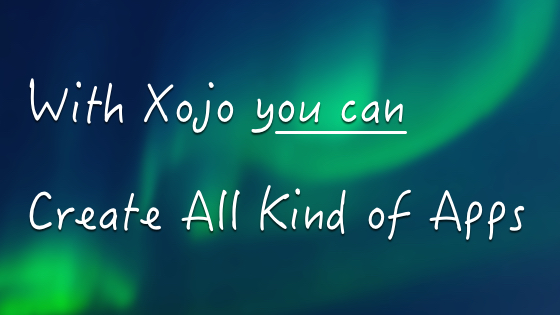I’m happy to report that the Xojo engineers have overcome the hurdles that prevented building for macOS from Windows and Linux. The ability to cross-compile macOS apps from Windows and Linux will return in Xojo 2021r3.
Comments closedTag: Multi-Platform Development
There is something that is even better than using Cell Renderers from third parties- building them yourself. In this second part, you will learn how…
Comments closedIf you are creating a web application, you’ve already noticed most of the time you are using WebListBox controls. Xojo Web 2.0 comes with a hidden gem called Custom Cell Renderers. They allow you to create reusable pieces of code to enhance your table cells.
Comments closedEducators can download Xojo to a classroom of computers and activate the Xojo Educational license on a build machine. Whether your classroom is Windows, Mac or Linux, the Xojo IDE is cross-platform and free to download. Though you may only be teaching desktop development, your students can stretch their skills and use Xojo’s free IDE to develop web, mobile or Raspberry Pi apps.
Comments closedWith API 2.0, Xojo has taken the opportunity to transition to more consistent APIs, modernize frameworks when we can and generally prepare for the future so that you can continue to use Xojo to make great apps for a long time. We are excited about the future of Xojo and can’t wait to see the apps you create!
Comments closedAmong the many new features introduced by the Web Framework 2.0, one of my favourites is the new WebChart class. Based on Chart.js, this class offers a total of eight chart types you can create and use really easily in your projects; including the Line, Bar, Pie or Doughnut chart types among others.
Comments closedIt’s always a good time to learn something new! And maybe you have some free time on your hands now? We know our screen time is up this year, so let’s put that extra screen time to good use and learn a new skill – programming. If you are going to add programming to your skillset, it’s logical to begin with a language that makes it simple to learn the basics of programming. Let me show you a learning path you can follow over 14 days that is aimed at giving you a confident and capable to start to programming.
Comments closedThis tutorial will show you how to deploy your SQLite based projects so they behave right on Desktop, Web and iOS, copying the database file to the right place on every target.
Comments closedAt Xojo we did the hard work of creating a framework with an API that manages the nuances, intricacies, and subtle yet important differences between 7 different platforms (macOS, Windows, Linux, web, Raspberry Pi, iOS and soon, Android) so you can focus on what makes your application unique. We have been doing it for over 20 years.
Comments closedWith so many programming languages and development environments around … why you should try Xojo? I could tell you more than 400,000 reasons to just jump-in right away; reasons I’ve heard for over 10 years now from Xojo users around the world that are building all kind of apps, products and solutions in all kinds of fields. Nevertheless, if I really think about, all of these reasons can be condensed into the following 10 main points. Continue reading and I’m pretty sure you will want to give Xojo a try too!
Comments closed
